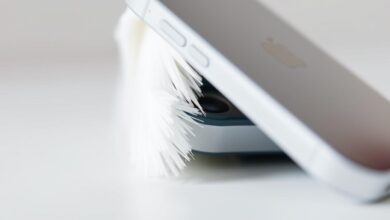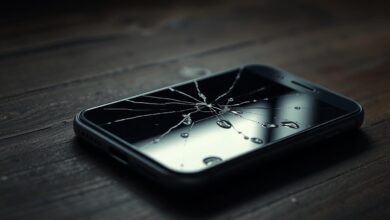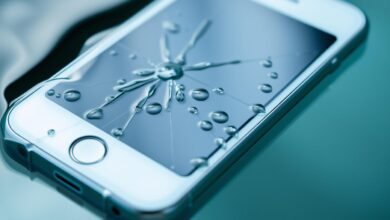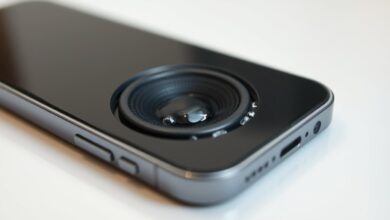how to take water out of iphone
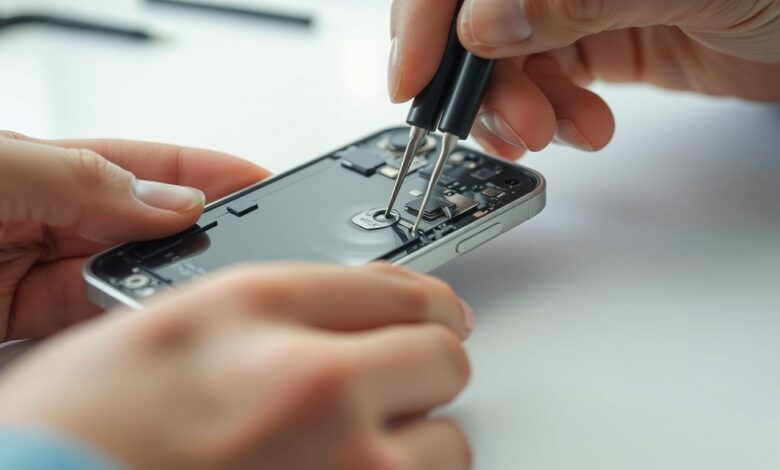
Water damage can ruin your iPhone. If your iPhone got wet, you must act fast. I’ve shared steps to help you recover your device and make it work like new again.
If water got into your iPhone, there are ways to eject water from the device. A good method is to use a trick that shakes the iPhone’s speakers to push out water. This tip is from a guide on PCMag. By doing these steps, you might save your iPhone from water damage.
Key Takeaways
- Act quickly to minimize water damage to your iPhone.
- Use a shortcut that vibrates the iPhone’s speakers to expel water.
- Avoid connecting headphones during the water ejection process.
- Turn your iPhone’s volume all the way up for more effective vibration.
- Give your iPhone time to dry out naturally if the water doesn’t eject immediately.
Understanding iPhone Water Damage
Knowing how water harms your iPhone is key to avoiding damage. Water and electronics don’t mix, and iPhones are no different.
How Water Affects iPhone Components
Water can get into your iPhone’s parts, causing corrosion and short circuits. The logic board is especially at risk. If water hits the logic board, it can damage your iPhone beyond repair.
Water can also harm other parts like the battery, screen, and charging port. Corrosion spreads fast, so you must act quickly if your iPhone gets wet.
iPhone Water Resistance Ratings Explained
iPhones have different water resistance levels, shown by their IP (Ingress Protection) ratings. For instance, the iPhone 13 can handle being underwater up to 4 meters for 30 minutes, thanks to its IP68 rating.
But remember, water resistance isn’t the same as being waterproof. Over time, your iPhone’s water resistance can wear off, making it more vulnerable to water damage.
As Apple says, “Liquid damage isn’t covered by warranty, but AppleCare+ might help.” This shows why knowing your iPhone’s limits and taking precautions is crucial.
Immediate Actions When Your iPhone Gets Wet
When your iPhone gets wet, quick action is key. It helps prevent corrosion and other water damage. Acting fast is crucial.
Turn Off Your iPhone Immediately
The first thing to do is turn off your iPhone right away. This stops short circuits that could harm it more. If it’s still on, press the sleep/wake button until it turns off. Don’t press the power button too many times, as it can cause more damage.
Remove Case and Accessories
Then, take off any cases or accessories from your iPhone. This lets you dry out hidden spots like the charging port and SIM card slot. Removing them also protects them from damage.
Wipe External Moisture
Use a soft cloth to gently wipe the outside of your iPhone. This removes any visible water. Be gentle to avoid pushing water into the device. This step helps keep water out of the internal parts.
What NOT to Do After Water Exposure
It’s also important to know what not to do. Avoid:
- Shaking or blowing into your iPhone, as this can push water further into the device.
- Using heat sources like a hair dryer to dry your iPhone, as excessive heat can cause damage to the internal components.
- Inserting foreign objects into the ports to dry them, as this can cause physical damage.
By avoiding these mistakes, you can greatly improve your iPhone’s chances of recovering from water damage.
How to Take Water Out of iPhone: Step-by-Step Guide
Removing water from your iPhone needs a careful plan to avoid damage. If your device gets wet, act fast and follow the right steps to lessen harm.
Water damage can be very bad for your iPhone. It might cost a lot to fix or even make your device useless. So, knowing how to remove water is key for iPhone water damage recovery.
Using the Water Eject Feature
Many modern iPhones have a water eject feature. You can turn it on with shortcuts or Siri commands. This feature makes a sound to push water out of the device’s speakers and openings.
To use it, you can make a Siri shortcut or download a water ejection app. You play a sound that shakes the water out of the iPhone’s speakers and other wet areas.
Manual Water Removal Techniques
If the water eject feature doesn’t work, you can try manual methods. First, gently pat the outside of your iPhone with a soft cloth to remove moisture. Don’t rub too hard, as it could push water inside.
To dry it better, use desiccants like silica gel packets or uncooked rice. Put your iPhone in a container with the desiccant, making sure it’s fully covered. Let it sit for at least 48 hours before trying to turn it on.
By following these steps and using the right methods, you can increase the chances of how to take water out of iPhone success. This also helps with iPhone water damage recovery.
Using Siri Shortcuts to Remove Water
Siri Shortcuts can help remove water from your iPhone. This is great if you’ve spilled water on your device.
Setting Up Water Eject Shortcut
To use the water eject feature, start by opening the Shortcuts app. Look for the “Water Eject” shortcut. If you can’t find it, download it from the Shortcuts Gallery.
After adding the shortcut, you can make changes. You might want to adjust the sound or set it to run automatically.
Running the Water Eject Shortcut
To run the Water Eject shortcut, open the Shortcuts app. Find the “Water Eject” shortcut and tap it.
The shortcut will play a sound through your iPhone’s speakers. This sound helps push water out of your device. You might need to run it a few times to get rid of all the water.
| Feature | Description | Benefit |
|---|---|---|
| Water Eject Shortcut | A Siri Shortcut that plays a sound to eject water | Helps remove water from iPhone speakers and ports |
| Customization | Allows adjusting sound frequency and automation | Enhances user experience and effectiveness |
| Ease of Use | Simple to activate through the Shortcuts app | Makes water removal a straightforward process |
Drying Methods for Water-Damaged iPhones
Drying a water-damaged iPhone needs careful thought. We aim to remove moisture without harming its parts. This is key to saving your device.
Air Drying Method
Letting your iPhone dry in a dry place is a safe and effective way. It takes time, often several days, for it to dry fully. To help, gently remove water from ports and place it in a dry area.
Don’t use heat like hair dryers or ovens to dry it faster. Heat can damage your iPhone’s inside parts.
Using Silica Gel Packets
Silica gel packets are great at soaking up moisture. To dry your iPhone, put it in a container with silica gel packets. Make sure your iPhone is fully covered by the gel.
- Make sure the container is sealed well to work best.
- Keep your iPhone in the container for 24 to 48 hours.
Drying with Uncooked Rice: Myth vs. Reality
Drying an iPhone with rice is a common trick, but its success is questioned. Rice can soak up moisture, but it might not be the best choice. Risks like dust and starch getting into your iPhone’s ports are possible.
Using special desiccants or silica gel packets is a better option. They are made for drying without the dangers of rice.
Using Compressed Air to Remove Water
Compressed air can help get water out of your iPhone if done right. It’s great for removing water from ports and speakers.
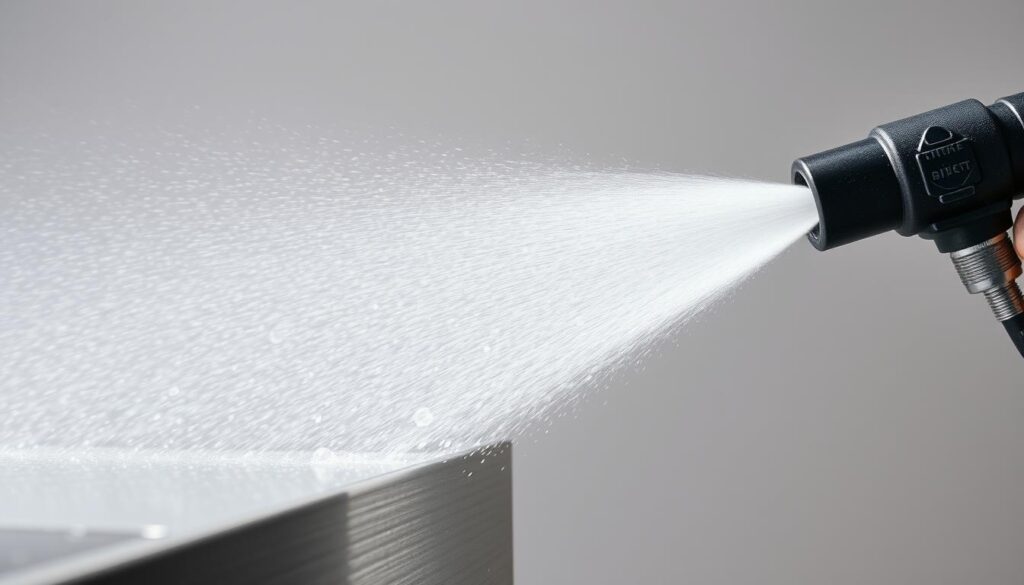
Safe Compressed Air Techniques
To use compressed air safely, keep the can upright. This stops liquids from coming out. Spray in short bursts, starting far away to avoid pushing water deeper.
Focus on ports and speaker grills where water often gets stuck. For more tips on drying a wet iPhone, check out wikiHow.
Potential Risks and Precautions
Compressed air can be risky. Too much pressure or being too close can harm your iPhone. Never spray it directly at the screen or other sensitive spots.
Use compressed air cans made for electronics to avoid damage. Always read the instructions and think of other drying methods if unsure.
Removing Water from iPhone Ports and Speakers
Dealing with water damage in iPhone ports and speakers is tough. Water can cause charging issues, distorted sound, and even stop the phone from working. Here, I’ll show you how to remove water from these sensitive spots.
Cleaning the Lightning/USB-C Port
The Lightning or USB-C port is often where water gets in, especially if the iPhone is submerged. To clean it, tilt your iPhone to let water drain out. Don’t put anything in the port, as it could push water in or harm the inside. Use a soft, dry cloth to pat the outside and let it air dry.
Drying Out Speaker Grills
Water in the speaker grills can mess up sound or make speakers stop working. To dry them, tap the iPhone to get rid of extra water. Then, use a soft-bristled brush or cotton swab to clean the grill.
You can also use a desiccant or uncooked rice to soak up moisture. But be careful not to push debris into the grill. Running a water eject shortcut can also help get water out of the speakers.
Addressing Microphone Water Damage
Water damage to the microphone can make calls and recordings sound bad. First, make sure the microphone grills are clean and free of dirt. Dry the outside with a soft cloth, and if needed, use compressed air to get rid of moisture.
If problems keep happening, you might need a pro to check or replace the microphone.
Diagnosing Water Damage Severity
Water damage can be hard to spot, but knowing how bad it is is key. Figuring out how much damage there is helps decide what to do next.
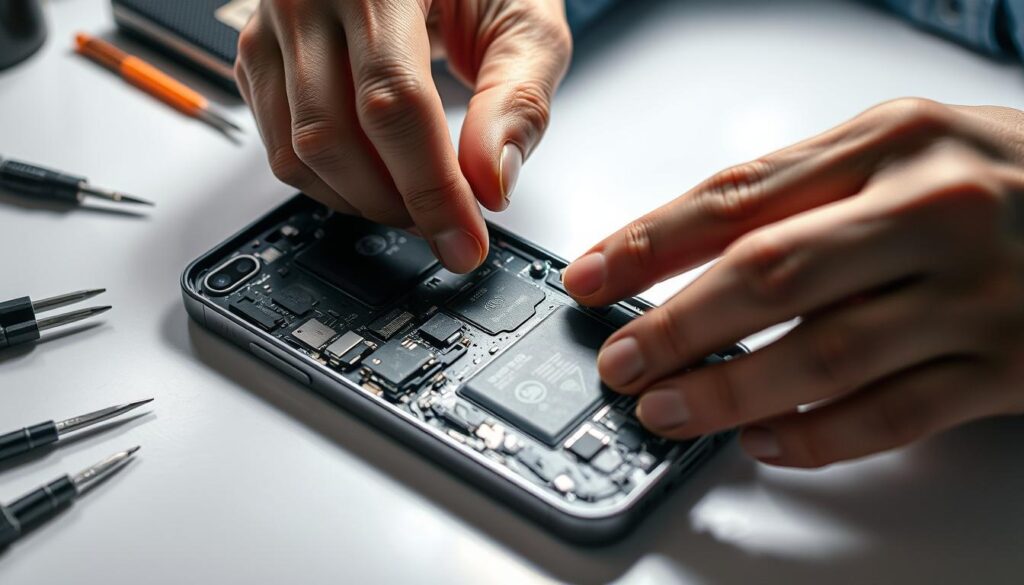
Using Liquid Contact Indicators
iPhones have Liquid Contact Indicators (LCIs) that change color when wet. You can find these inside the SIM card tray or on other parts. Checking these indicators is a simple way to see if your iPhone got wet. For more info on iPhone water damage, check this resource.
Testing iPhone Functionality
To really check for water damage, test your iPhone. See if the screen works, if the speakers sound right, and if the charging port is good. Any problem with these could mean water damage. As Apple Support advises, checking your iPhone’s functions is key to knowing the damage.
Model-Specific Water Damage Assessment
Each iPhone model shows water damage in its own way. Some have clearer LCIs or parts more likely to get wet. Knowing your iPhone’s specific weaknesses is important. According to a statement by
“Apple’s water resistance doesn’t mean it’s waterproof, and the level of resistance varies by model.”
, it’s vital to assess your model’s damage.
Dealing with Persistent Water Damage Issues
Dealing with water damage on your iPhone can be tough. Even after trying to dry it out, some problems might stay. It’s important to know how to fix these issues to get your iPhone working right again.
Addressing Touchscreen Problems
Water damage often causes touchscreen issues. If your screen won’t respond or acts strangely, try restarting your iPhone. If it still doesn’t work, you might need to calibrate your touchscreen or get it fixed by a pro. Water can also cause corrosion that makes the screen not work.
To fix it, make sure your screen is clean and dry. A simple cleaning might solve the problem. If not, a professional can help.
Fixing Sound and Speaker Issues
Water damage can mess up your iPhone’s sound or make the speaker not work. Try drying out the speaker grills with a soft brush or cloth. You can also use a water eject feature if it’s available. If it still doesn’t work, you might need to get the speaker fixed or replaced.
Resolving Charging Problems
Charging issues are common after water damage. Corrosion or water in the charging port can stop your iPhone from charging. To fix this, clean the Lightning or USB-C port with a soft-bristled brush or cotton swab. Don’t use liquids or sharp objects that could damage it more.
Here’s a quick guide to fixing common water damage problems:
| Issue | Troubleshooting Steps |
|---|---|
| Touchscreen Problems | Restart iPhone, clean screen, calibrate touchscreen |
| Sound and Speaker Issues | Dry speaker grills, use water eject feature |
| Charging Problems | Clean charging port, inspect for corrosion |
When to Seek Professional iPhone Water Damage Repair
Not all iPhone water damage can be fixed at home. Sometimes, you need a pro. While quick actions and DIY tricks can help, there are times when you should get expert help.
Signs Your iPhone Needs Professional Help
If your iPhone shows these signs after getting wet, it’s time for a pro:
- Persistent issues with the touchscreen or display
- Water damage indicators are triggered, indicating exposure to liquid
- Corrosion or mineral deposits visible inside the device
- Functional issues such as faulty speakers, microphone problems, or charging difficulties
Ignoring these signs can lead to further damage, making it harder or even impossible to repair your iPhone.
Apple Store vs. Third-Party Repair Options
When choosing professional repair, you have two options: Apple Store or third-party services. Apple Store repairs use genuine parts and come with a warranty, but they cost more. Third-party shops might be cheaper, but make sure to pick a reliable one for quality repairs.

Average iPhone Water Damage Repair Cost
The cost to fix iPhone water damage varies a lot. It can be from $50 for small fixes to over $300 for big problems or newer phones. Always ask for a quote before fixing your device.
Knowing the costs and options for professional repair helps you decide how to fix your iPhone.
iPhone Water Damage and Warranty Coverage
iPhone water damage can be a tricky issue with warranty coverage. Many users wonder if their warranty covers water damage. They also look for repair or replacement options.
Apple offers support, including AppleCare+, an extended warranty program. It’s key to understand this program and Apple’s liquid damage policy.
Does AppleCare+ Cover Water Damage?
AppleCare+ covers up to two incidents of accidental damage, including water damage, for a fee. This is in addition to Apple’s standard one-year warranty. For more information, visit Apple’s Support Page.
It’s important to know AppleCare+ protects against accidental damage. But it doesn’t cover misuse or neglect. Users must take proper care to be covered.
Understanding Liquid Damage Policy
Apple’s liquid damage policy helps users understand their options with liquid damage. If your iPhone gets damaged by water, Apple might not repair it under warranty. This is if the damage is from liquid exposure.
Liquid Contact Indicators (LCIs) inside the iPhone show water exposure. If these indicators are triggered, it might void the warranty. Unless you have AppleCare+ coverage.
Knowing these policies helps you make better choices for your iPhone’s care and repairs.
Recovering Data from a Water-Damaged iPhone
Water damage to your iPhone doesn’t mean you’ve lost your data forever. You can get your important information back with the right steps. The first thing is to act fast and use the right recovery methods.
Using iCloud Backups
If you’ve turned on iCloud backups, you can easily get your iPhone data back after water damage. Just make sure your iPhone is on Wi-Fi. Then, go to Settings > [your name] > iCloud > iCloud Backup, and choose to restore from a backup. This is easy and doesn’t need any special skills.
It’s key to back up your iPhone to iCloud regularly. This keeps your data current. To do this, go to Settings > [your name] > iCloud > iCloud Backup, and turn on “iCloud Backup.” Your iPhone will back up automatically when it’s plugged in, locked, and on Wi-Fi.
Computer Backup Recovery Options
If you’ve backed up your iPhone to your computer with iTunes or Finder, you can restore your data. Just connect your iPhone to the computer, open iTunes or Finder, and pick “Restore Backup.” Choose the latest backup to get your data back. This is great if you don’t use iCloud backups.
Professional Data Recovery Services
If your iPhone is badly damaged, or you can’t get data back with backups, try professional data recovery services. These services can get data directly from your iPhone’s chips. While it’s expensive, it’s often the best way to get data from a badly damaged iPhone.
| Recovery Method | Success Rate | Cost |
|---|---|---|
| iCloud Backup | High | Free (if you have existing backups) |
| Computer Backup | High | Free (if you have existing backups) |
| Professional Data Recovery | Variable | $100-$1000+ |
Conclusion
Dealing with water damage on an iPhone can be a real challenge. We’ve looked at ways to remove water from your iPhone and save it. But the best way is to prevent water damage in the first place.
Knowing how water harms your iPhone’s parts and acting fast when it gets wet can help a lot. Check your iPhone’s ports and speakers often. Use waterproof cases and watch out for water around you.
Preventing damage is crucial to avoid costly repairs or buying a new iPhone. Being proactive means you can use your device without worry, even near water.
Stay safe and keep your iPhone safe with good prevention strategies.
FAQ
How do I know if my iPhone has water damage?
Look for signs like corrosion, water spots, or Liquid Contact Indicators (LCI) that have turned red or pink. These signs mean your iPhone has been exposed to liquid. You can also test your iPhone to see if it’s working right.
Can I fix water damage on my iPhone myself?
You can try to remove water from your iPhone yourself. Use the water eject feature or dry it with silica gel packets. But, if the damage is severe, you might need a professional to fix it.
How much does iPhone water damage repair cost?
Repair costs vary based on your iPhone model, the damage, and the repair needed. Prices can be between 0 and 0 or more. It’s wise to get quotes from Apple or repair services to know the exact cost.
Does AppleCare+ cover water damage?
Yes, AppleCare+ covers up to two incidents of accidental damage, including water damage, for a fee. Make sure to check the AppleCare+ terms to know what’s covered and what’s not.
How can I recover data from a water-damaged iPhone?
You can recover data by using iCloud backups, computer backup recovery, or professional services. The best method depends on your backup habits and the damage’s extent.
Can I use compressed air to remove water from my iPhone?
Yes, compressed air can help remove water from your iPhone. But, use it safely and correctly to avoid more damage. Follow proper techniques and precautions.
How do I dry out my iPhone’s speaker grills?
Gently tap the speaker to remove excess water. Then, use a soft cloth or cotton swab to dry it. You can also use compressed air or a desiccant to dry the speaker grills.
What should I do if my iPhone’s touchscreen is not working after water damage?
If your touchscreen isn’t working, you might need to repair or replace it. Try restarting your iPhone, cleaning the screen, or using a screen cleaning solution. If it still doesn’t work, seek professional help.
